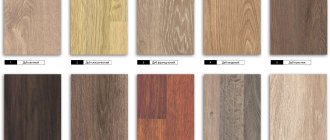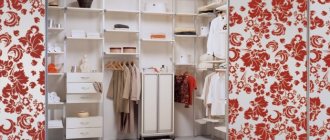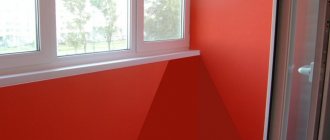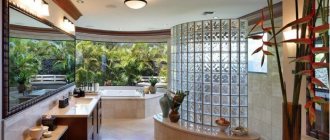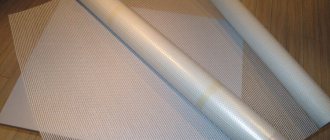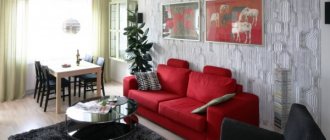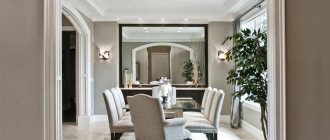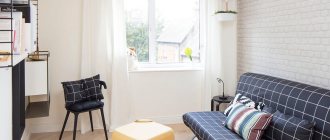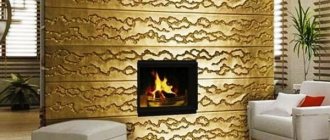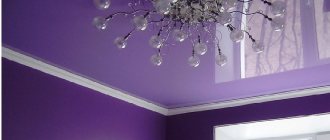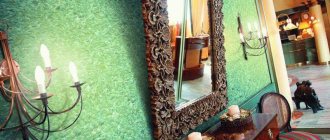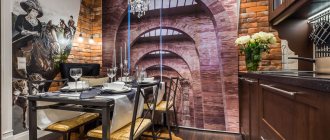Interior design
An important stage of renovation is finishing the walls in the hallway, since it is this room that is most often exposed to contamination due to the presence of the entrance area. Precipitation, dirt, and dust from the street quickly settle on surfaces, so it is important to choose materials that are hygienic and easy to maintain.
Features of wall decoration in the hallway
The hallway is a kind of face of the house: it creates the first impression of it among guests. Therefore, it is important that the decor of the place is attractive. In pursuit of beauty, however, one should not forget about the purpose of the room, which imposes certain restrictions on the use of materials. To avoid having to constantly make repairs, the selected decor must have the following properties:
- Durability. Including resistance to abrasion and mechanical damage.
- Durability. It is optimal if the manufacturer guarantees a coating service life of at least 5-7 years.
- Easy to care for. Considering that the walls in the corridors are often dirty, the material should at least be resistant to wet cleaning. Ideally, it should be cleanable with a brush and the use of some detergents.
- Maintainability. It is important that the surface can be repaired. In this case, if a defect appears, it can be repaired, which is much cheaper and easier than replacing the entire surface.
- Safety. The material must be safe for the health of those nearby. In addition, fire safety must be taken into account. Do not use flammable or toxic coatings in the room where the entrance door is located. In the event of a fire, this could cost lives.
The color and texture of coatings can vary greatly. They are selected depending on the characteristics of the corridor in question. By combining materials, shades and textures, you can achieve the best results. Light shades will optically expand the space, while dark shades will narrow it. Clever use of patterns, lighting and the installation of mirrors can enhance the effect.
About the advantages and disadvantages
The advantages of finishing include:
- harmony with any style;
- a huge range of textures, shapes and colors;
- originality;
- easy maintenance and long service life;
- decorating walls in this way will not be difficult;
- the stone is not susceptible to infection by fungal growths;
- environmental friendliness;
- light weight.
Cons of artificial stone:
- shorter service life compared to natural materials;
- some samples made of soft material quickly take on a shabby appearance;
If you correctly select this decorative element, then the listed shortcomings will remain in the shadows. To protect it from negative environmental influences, its surface is treated with a special impregnation or varnished.
Materials for decoration
The walls in the corridor or hallway can be finished with stone, decorative plaster, wallpaper, wall panels, made in the form of brickwork, or a combination of these materials.
Decorative plaster
Thanks to the textured, imitation and color properties of decorative plaster, amazing effects can be achieved. Textured surface with various patterns, ideal for any decoration style.
Fresco
A fresco is a unique, elegant piece. Compatible with any finish. Ready-made frescoes can be purchased in stores. To create a unique design, you can order the services of an artist.
Plastic panels
Plastic panels are very often used for cladding the walls of corridors. This material is budget-friendly and available in a wide range of designs and colors.
The interior walls of the corridor made of plastic panels can be made in any style. Covering walls with this material is quite simple and easy; there is no need to level or heavily prepare the walls.
Plastic panels can be wet cleaned, but it is worth remembering that they quickly fade when exposed to direct sunlight and are also easily damaged.
Dye
Painting the walls in the hallway is the cheapest and easiest option. A wide range of paints means you can choose any shade of color for your hallway walls. Usually choose warm, pastel colors.
It is worth noting that in order for the paint to adhere well to the walls, they must be well prepared and as smooth as possible, otherwise all the flaws on the wall will be visible.
Wallpaper
Allows you to create a really interesting corridor design. Washable vinyl, laminated or photo wallpaper will not only create a unique interior, but will also last a long time.
The photo shows a spacious hallway, the walls of which are decorated with wallpaper with bird motifs.
Flexible stone
It consists of a polymer slab covered with marble chips that successfully imitate natural stone.
Ceramic tiles
Tiles are commonly used in bathrooms and kitchens. But with the right choice, they will look good in hallways. A wide selection of colors and patterns allows you to create interesting styling. Anti-scratch, practical, durable, heat-resistant and water-repellent.
The material can be used under the floor or as wall cladding. Imitation wood, stone and leather are ideal for country or country house style.
Stone
Natural or artificial stone in the hallway looks very impressive. As with creating a brick wall, the walls can be finished with stone. Apply it not to one wall, but to several. The decoration should be in the form of small inclusions.
Stone fragments are usually placed around the front door, as well as in front of it. This stylistic move immediately attracts attention.
Laminate
Inexpensive, but very effective laminate, which has many positive qualities. Laminate on the wall in the hallway can be used as an insert, or you can decorate one of the walls.
Mosaic
A variety of complex compositions, patterns and images make it extremely easy to bring color and originality to your hallway.
The photo shows a hallway with a wall decorated with a gold mosaic pattern.
Stickers
A great way to add personality and style to your living room. A variety of stickers in bright colors not only create a positive visual effect, but also help hide imperfections on the walls.
The photo shows a hallway and wall in a lilac shade, decorated with a sticker in the shape of a tree.
Bas-relief
Bas-relief is an aesthetic that attracts attention. You can create your own bas-relief and get an unusual and interesting design.
Gypsum panels and porcelain tiles
In this project, the author used several materials at once: drywall, MDF and large-format ceramics. Communications are hidden behind the panels, and the slabs visually divide the long corridor.
Design: Anush Arakelyan. View the entire project Project: Anush Arakelyan. View the entire project
Brick wall
A brick wall is a rather bold and bright solution in the interior. Products that imitate small bricks bring a special charm to the interior. Quite often, white trim is used in the hallway, which makes the room more expressive and unusual.
The photo shows a small corridor with a brick wall.
MDF or fiberboard panels
The end of the MDF finishing panel
MDF is wood fiber boards produced by dry pressing of fibers using urea resins. The outer side of the panels is decorated with a coating that imitates natural wood of various species or other natural materials. Some panels are covered with a special protective film - this process is called lamination.
In addition to MDF, fiberboard panels are also available for sale, which have a lower cost, but experienced craftsmen still recommend choosing the first finishing option.
Cladding panels – lining based on MDF
The significant difference between these materials lies in their technical characteristics:
- MDF is a safer material than fiberboard, since the latter uses phenol-formaldehyde resins as a binder, which emit toxic fumes that can harm the health of apartment residents. MDF, from this point of view, is incomparably cleaner.
- The strength of MDF is much higher than that of fiberboard finishing. Such panels are more resistant to external mechanical influences, which is very important for a room such as a corridor.
- MDF, unlike fiberboard, has a water-repellent coating, which allows for wet cleaning of walls without much regard for the frequency of this process.
However, for all its advantages, MDF has a high flammability category - G4, and for different fiberboard models this parameter can be lower - from G1 to G4. Therefore, when choosing a finish, you must pay attention to this characteristic.
Installation of both MDF and fiberboard panels is carried out in the same way, approximately the same as PVC panels and natural wooden lining: along sheathing guides installed vertically or horizontally.
MDF panels are produced in different dimensional standards. Thickness usually varies from 6 to 14 mm, width from 98 to 325 mm, and they come in lengths of 1300 or 2600 mm, that is, they are perfect for filling the space from floor to ceiling in a standard city apartment.
MDF panels are produced in several variations, which are divided according to production method, characteristics and color features. They can be:
- Whole pressed.
- Laminated with a smooth glossy surface.
- Moisture-resistant, intended for rooms with high humidity.
- Veneered, imitating finishing with natural wood or cork.
- Painted with a special paint that can smooth out unevenness and create a glossy or matte surface.
It is not recommended to use MDF or fiberboard panels if very playful animals live in the apartment, as they can easily scratch even a laminated surface.
Hall interior: 3 mandatory points
1 There must be a mirror.
There should be no mirror in the hallway. It is important to position the mirror correctly to optically enlarge the hallway. You can hang a mirror on one of the walls, scattering the space behind it. The mirror can also be placed on the sliding door of a wardrobe or on the front door. The mirror can also be framed to add variety to your interior design.
2 Comfortable furniture
In compact hallways, furniture should be functional and comfortable. The free space in a country cottage allows you to organize storage systems in the dressing room, so a small chest of drawers will be enough in the hallway to store various trinkets. For those who prefer to store outerwear and shoes in the hallway, there are spacious wardrobes to choose from. The interior will become lighter if the bulky structure is almost invisible. This effect can be achieved using recessed furniture or mirrored doors. Often storage areas give away handles, so to keep them secret, order a cabinet with a push up system, which allows you to open cabinets by pressing on its surface.
A bench or ottoman to sit on while you put on your shoes will add comfort to your entryway.
3. proper lighting
If you don't have access to natural light, you need adequate artificial lighting. You can use a combination of spotlights and pendant lights. For a large hallway decorated in a classic style, a large chandelier is ideal. A floor lamp on a chest of drawers or a wall sconce to create a more intimate atmosphere.
Nuances of interior design
When choosing a design for the walls, you should decide on furniture and accessories, know how and where they will be located. The hallway must have storage systems for shoes and clothes. This is a minimum set, which it is advisable to expand significantly. If possible, it is worth delimiting the space. This is especially important for narrow spaces. It is better to zone them using furniture, multi-level ceilings, and wall decoration.
It is important to decide on the design style. It can be common for all rooms or individual for each. In the latter case, the chosen style should best suit the characteristics of a particular hallway, its size and functionality. For example, for a small room, a minimalist design is well suited.
Design of a small hallway
Designs for small vestibules do not make much sense. Functionality and precision come first. Therefore, only one selected decorative material will be used for finishing. No unnecessary complications.
Flowing wallpaper in a practical shade. Shades of gray or sand are ideal.
Masonry. No islands or complications. Simple and concise.
Wallpaper with coloring function. No patterns or ornaments.
The walls are painted in any neutral shade.
Liquid wallpaper takes first place for a reason. Its practicality is at the highest level.
A small hallway will force you to touch the walls, and an accident is bound to happen, resulting in dirty splashes on the walls. Liquid wallpaper copes brilliantly with these problems. They are durable, washable, and do not show minor dirt. Brick wallpaper has the same advantages, but is more difficult to decorate.
Paintable wallpaper is more practical than painting the wall itself. It is easy to stick on and can be darkened or repainted to a different shade at any time. Be simple and uncomplicated, without patterns or designs.
Paint is not practical in hallways. Especially in dark shades.
The fact is that walls are painted after priming, and this material is white. Therefore, any chips and scratches will be clearly visible. In addition, each touch leaves a slight mark, as if someone had rubbed it with an eraser. After a while there will be a lot of such traces, and only they give the corridor a chaotic look.
Overall, the idea is clear. Choose one type of material and one shade. No tricks are needed here.
Light or bright colors
A very common but effective option for visually expanding the hallway space is to paint the walls white or another light shade.
It is best to combine shades, for example: it is better to paint long walls in a lighter/brighter shade than short ones. This will make the corridor seem larger. Avoid overly intrusive colors or aggressive patterns.
Another good tip for making a quaint entryway feel more spacious is proper lighting. In most cases, there are no windows in the hallway, so it is necessary to install several light sources from different sides. This can be done using sconces, wall lights or LED strips.
Correct selection of furniture
Probably one of the most logical space-saving tips is to purchase prefabricated or narrow furniture. Practical furniture is not just a practical pouf that can be easily put away.
Multifunctional cabinets and shelves, hooks for clothes or hats, and elegant cabinets with hinged doors are just some of the options.
Another way to save space in the hallway is to use narrow or hidden-mounted appliances. It's best not to underestimate this method - when installed correctly, they can hold as much clothing as a regular closet.
And the last tip: using organizers and baskets in the hallway will not only increase space, but also get rid of chaos and clutter in the hallway.
Photo wallpapers and mirrors
Fashion is cyclical, and what once seemed beautiful and then lost popularity can become relevant again! This is the case with photo wallpapers - not so long ago they were considered unappetizing, but now they can bring depth and variety to the interior of a room.
Large mirrors will create an optical illusion effect and increase the space. You can also use shelves with a mirror or glass surface, which will reflect light and add sparkle to the room.
Plastic panels
One of the most affordable finishing options is plastic panels.
PVC panels are an affordable and easy-to-install material that can, however, significantly transform any room. Such cladding provides great opportunities in planning your own version of the interior of the corridor, as it is produced in a rich variety of colors, ornamental and relief patterns, with a very reliable imitation of natural materials - the texture of wood, stone, sand, etc.
This is all - also plastic panels, so the finishing possibilities are not very limited.
This material is very popular due to its aesthetic appearance, durability and relative strength. The panels are easy to clean with wet cleaning, so they are perfect for decorating corridor walls, both the lower part of the wall and all surfaces completely.
Successful design of the corridor and hallway with a combination of colors of PVC panels
If PVC panels are chosen for finishing the corridor, then the repair will take place quickly and relatively cleanly, without unpleasant odors of paint or spilled glue.
Using this material, it is quite easy to level the surfaces of rooms; it becomes possible to hide cables and communication pipes without stripping the walls. In addition, soundproofing material can be placed behind the panels.
Despite their synthetic origin, PVC panels under normal operating conditions are completely harmless to humans
Panels produced for interior decoration are an environmentally friendly material that does not emit harmful fumes.
The advantage of PVC panels is that such a coating will not attract animals, since it has a smooth surface that is not easy to claw into.
In order for the finish to meet all the qualities mentioned above, you should not purchase cheap materials. The stiffening ribs installed inside the panel should not be visible through the outer solid layers of plastic, and when you press them with your fingers, they should not wrinkle.
The surface of the panels should not have deformations or dents, and the joining of individual lamellas should be easy, with the tenon completely inserted into the groove.
One cannot help but remember that for finishing corridors and hallways it is necessary to choose PVC panels with a flammability category of G1 or NG. They have a special treatment that makes them more resistant to ignition and melting even when heated to extremely high temperatures. This circumstance must be taken into account so that in emergency situations the exit from the apartment is not blocked by strong and toxic smoke or even open fire.
The process of installing PVC cladding on walls is accessible to everyone!
Any owner who is more or less “savvy” with basic construction skills is able to perform such cladding. How to decorate walls with plastic panels - read in a separate publication on our portal.
For a large hallway
Increasingly, large modern hallways are found in cottages, detached houses or large apartments. Here the designer’s imagination is not limited.
According to modern style, it is necessary to have a closet in which, in addition to clothes, you can put a vacuum cleaner, extra pillows and blankets and many other trinkets.
For decoration you can use different colors and shades. For example, you can use dark colors, experiment with various accessories and decorate it with large, expensive decor that will emphasize the wealth of the owner.
It is important to remember that all the selected furniture will be comfortable, and its quantity will be optimal.
Other furniture
If there is free space in the hallway, install a small bench, pouf or chair. A good addition could be a table, a small chest of drawers or a bedside table.
Larger rooms can accommodate a whole set, but don't make the room too cluttered.
Cabinets
Modern hallways try to get rid of unnecessary or rarely used items as much as possible, and hide everything else behind beautiful and neat facades of storage systems.
The best way to do this is through your wardrobe. It is compact in size, does not require additional space to open the door and securely accommodates the mirror built into it.
Having a fairly large internal space, the compartments are ideal for storing small items of clothing: scarves, mittens, hats, outerwear, shoes, care products for all these things.
Hinged cabinets are less popular, but are still used quite often.
Mirrors
It's hard to imagine a hallway without a mirror. This is where the finishing touches are put on the look you've created, your overall appearance is assessed and the subtleties of your wardrobe are checked.
In large hallways, two mirrors are often installed, one opposite the other. This makes the space seem larger.
A mirror on a closet door looks great because it doesn't take up space on the wall or reflect clothes or shoes hanging on the shelves.
For a more interesting accent, mirror surfaces can be patterned or covered with a decorative matte pattern.
Lighting
Most lobbies do not have their own windows, so lighting is also an important issue.
Most often, several types of lighting are planned.
General lighting will illuminate the entire area, spot lighting will highlight certain objects (cabinets, mirrors, paintings) or areas.
Artificial stone on the arch
A popular option for using stone in the interior of a hallway is lining the passage to different rooms with stone. Using your imagination, you can choose the best option for yourself.
The decoration of the opening looks exclusive if the brick meets the wall in places.
The arch can be made in any color and style.
You can line one side of the passage with stone.
Or surround it with stones.
Hallway in a modern style: photos of mistakes
Let's start with the mistakes made when decorating the interior of the hallway. This is usually the most educational part. The photo itself will go first, and then below it will be a description of the error.
Is this mirror too small? But why is it so high? Apparently, the owners practice warming up by jumping rope before going outside. Enlarge the mirror and place it below.
The cabinet design is not bad, but it should be horizontally mirrored. Move the fenced high section further out and move the bench right up to the entrance. Otherwise, the entrance is too crowded. And if several guests arrive, how will they fit in such a cramped space? In fact of the matter. And they forgot about the mirror, like in most of the photos in this article.
There is space and no mirror - no problem. There was nothing stopping them from hanging a mirror to the right of the door or removing a few coat hangers.
Well, and our favorite hallway, no more comments.
Photo of the walls in the hallway (interesting design ideas)
Design ideas
Decorative elements
In a small hallway, it is advisable to avoid additional decorative elements, as they overload the space. Just put some figurines and a mirror. If the size of the room allows, accessories will help give the space additional touches. A good option would be a painting - the size of the canvas depends on the size of the wall. It is important that all the main elements of the interior look proportional. That is, if there is a large wardrobe in the hallway, then a canvas measuring 60 by 40 will look appropriate. But this picture will look too wide against the background of the small size of the furniture.
Another important rule is the dosage of interior elements. There should be no more than two paintings on each wall. It is better to leave rooms with original wall coverings without additional decorations.
Square hallway
This classic entryway is easy to create, but just as easy to ruin if you mess up the design. It is important that the middle passage is always clear. On one side there should be a small closet, a chest of drawers and a shoe cabinet with a bench, and on the other there should be a wardrobe. Perfect symmetry and the absence of unnecessary details will reveal all the advantages of the room.
It is important that each element emphasizes the correctness of the square. This applies not only to furniture, but also to finishes and colors. If you decide to choose a contrasting color scheme, it should be replicated on both sides of the front door.
Selection of furniture for the hallway
When choosing furniture, remember that the hallway needs free space. Therefore, if the hallway area is small, it is better to avoid bulky massive cabinets and walls. Instead, choose cabinets with light-colored legs. Recessed furniture is another good idea. A built-in wardrobe will not clutter up the space and will provide plenty of storage space.
In addition, the hallway should have a small table for keys and trinkets, a seat for convenience, a clothes hanger, a cabinet for shoes and a mirror. All furniture can be decorated in one shade or create a harmonious ensemble.
What to consider when choosing a finish?
The hallway is a utilitarian room. Before you start choosing its decor, it is worth determining the desired functionality of the room. This could be the placement of closed storage systems, an exhibition of family photographs, children's drawings or souvenirs brought from vacations, or something else. Depending on this, the design is selected. In addition to functionality, you need to consider:
- Size and shape of the room.
- General style of home decoration.
- The presence of small children and pets, which can ruin some types of finishes.
Making a niche in the wall
It is worth considering the presence of niches, ledges or arches. They make finishing somewhat difficult and require proper placement of accents. In a well-chosen design, such elements become a kind of highlight that decorates the interior. For example, niches are often decorated in contrast to the main decoration. Thus, as if emphasizing them. If the niche is small, you can place a lamp or figurine in it. The more spacious room houses frescoes, photo wallpapers or a small exhibition.
Modern interior styles
Find out about the latest design trends with descriptions and photographs of fashionable hallways.
Classical
The laconic classic looks noble and emphasizes the taste of the apartment owners.
In this interior, raw elements are unacceptable, which are welcome in high-tech, modern or loft styles.
The classic style uses a light palette for walls, floors, ceilings and furniture, a choice of natural materials or their imitations, and an integration of ornaments including stucco, blacksmithing, etc.
High tech
High-tech, with its desire to remove everything unnecessary, is another suitable option for city life. However, many people find this style uncomfortable. One of the most unusual solutions that is suitable for hi-tech is to place flush-mounted neon lamps of different colors along the wall. This will definitely add variety to the interior.
Minimalism
Minimalism or eco-minimalism—with its penchant for uncluttered spaces—is ideal for any small space.
Original
Pastel colors may be the best option. However, to give the room a unique look, you can also create bright contrasts. Carefully arranging a variety of furniture that combines several colors can give the desired effect. For example, by decorating the walls with soft panels and installing bedside tables, you will turn your hallway into a cozy corner.
DIY wall decorations or custom wall murals can make your entryway feel more spacious and full of color. And fancy wall hooks, hangers, wall accessories with unusual decorations can fill the room with uniqueness, creating a special atmosphere.
You can lay a carpet with an original pattern. Paste the same motif on one wall and on the ceiling. High-quality wall panels and a mirror wall are ideal options for decorating the exterior of the hallway.
Unique shades of cabinet fronts, doors, floors or ceilings in a checkerboard style will make even your wildest fantasies come true. Plus, a deep, slightly solid color will leave an unusual mark on your guests' first impression.
Provence
If the room should be decorated in Provence style, then follow these rules:
- Use natural finishing materials or their analogues.
- Keep your color scheme light by using lavender, cream, pale blue and other pastel colors.
- Use vintage accents and handmade accessories for decor.
Loft
The interior, designed in a loft style, looks raw and brutal. But it does not have to consist only of brick walls. The space can be decorated with other interesting accents.
Organizing a hallway in an apartment does not require large expenses, since natural brick, concrete and wood with an antique effect are allowed in the decoration.
The color range is not limited to dark shades. You can also use a light palette with contrasting details.
Art Deco
Considered luxurious and somewhat artsy, this style allows for bolder ideas and custom details. It can have several levels of ceiling, stucco, textured walls and so on.
If you are planning to decorate a room in an art deco style, you will have to give up budget furniture and cheap decor.
It should contain only expensive materials, for example:
- Ceramic tile.
- Varnished wood.
Scandinavian
This style is built on an abundance of free space. Therefore, only compact furniture is used. The accent color is white combined with pastel colors.
In the Scandinavian direction, elements of high-tech, loft or modern minimalism are allowed.
Examples of floor finishing
The floor in the hallway is subject to loads even more than the walls, so you need to carefully choose the material. It must have an anti-slip coating, be resistant to moisture, be impact-resistant and wear-resistant. Carpet has all these characteristics, but it is quite difficult to clean.
Better than the previous option is parquet, which is often used to finish the floor. But it has many disadvantages. Firstly, it is afraid of moisture, and secondly, it wears out quickly. You may prefer laminate; it withstands moisture and shock well, and looks beautiful. The floor will be decorated in imitation of natural wood. Linoleum is most often used in apartments. This traditional coating is not afraid of moisture, does not rot and is easy to clean. You can choose the same ceramic tiles that will harmonize with the ceramics on the walls.
Color spectrum
Since there are no windows in a standard hallway, bright colors are preferred. This could be white, beige or bolder colors such as blue, burnt orange, grey, lime green, pink or purple. Shades of brown, from deep rich to light coffee, look good as accents.
Accent colors should not make up more than 15-20% of the interior color palette. However, designs on finishing materials and textiles are acceptable. Such details will help create a more interesting organization of space.
